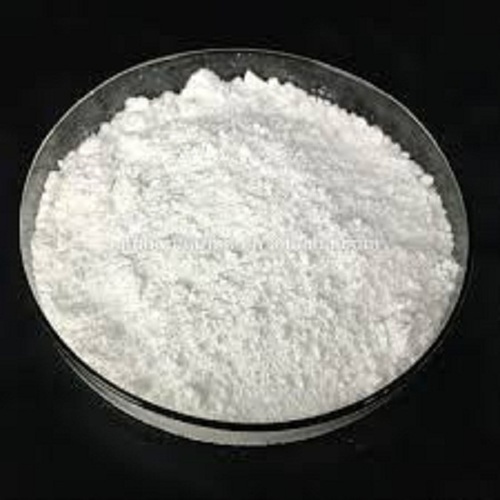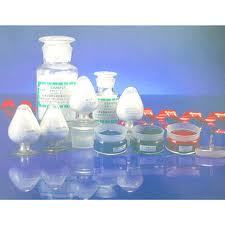Aluminium Hydroxide
85 INR/Kilograms
Product Details:
- Structural Formula AHI3
- HS Code 28123000
- Molecular Formula Al(OH)3
- Melting Point 300 C
- Loss on Drying 25 or 40 C
- Particle Size 0.7-1.5
- Taste Odorless
- Click to View more
X
Aluminium Hydroxide Price And Quantity
- 85.00 - 90.00 INR/Kilograms
- 85 INR/Kilograms
- 25 Kilograms
Aluminium Hydroxide Product Specifications
- 25 or 40 C
- 99%
- NA
- Odorless
- 0.7-1.5
- Al(OH)3
- AHI3
- 28123000
- 21645-51-2
- 300 C
- Aluminium Hydroxide
- Medicine Grade
- Room Temperature
- 215-691-6
- NMT10
- Powder
- Hydrargillite
- Aluminum hydroxide is used for the relief of heartburn, sour stomach, and peptic ulcer pain and to promote the healing of peptic ulcers
- White amorphous powder
- 5 Years
- Pharmaceutical Intermediates
- NMT0.006%
- Other
- 78. g/mol Grams (g)
- Soluble in dilute mineral acids and dilute alkali . Insoluble in water and alcohol.
Aluminium Hydroxide Trade Information
- Mumbai
- Letter of Credit (L/C) Letter of Credit at Sight (Sight L/C) Delivery Point (DP) Days after Acceptance (DA) Cash in Advance (CID) Cash Advance (CA)
- 100 Kilograms Per Day
- 7 Days
- Yes
- Free samples are available
- 25kgs drum pack
- Western Europe Asia Australia North America South America Eastern Europe Central America Middle East Africa
- All India
- GMP and ISO certificate
Product Description
Aluminum hydroxide is a chemical compound with the formula Al(OH)3. It is commonly used as an antacid to neutralize stomach acid in conditions such as acid reflux, heartburn, and indigestion.
Aluminum hydroxide works by binding to excess stomach acid, forming a neutral salt that is then excreted in the feces. It also has the ability to protect the stomach lining from further damage caused by acid.
Apart from its medical uses, aluminum hydroxide is also used in the production of various materials, such as aluminum metal, ceramics, and flame retardants. It is a white powder that is insoluble in water but can be dissolved in acids or bases. However, excessive intake of aluminum hydroxide can lead to aluminum toxicity, which can cause neurological and bone-related health problems. Therefore, it is important to use aluminum hydroxide only as directed by a healthcare professional.
Aluminum Hydroxide Properties:
- Chemical formula: Al(OH)3
- Molecular weight: 78.0 g/mol
- Appearance: White powder
- Density: 2.42 g/cm3
- Melting point: 300 degree centigrade
- Solubility: Insoluble in water, but soluble in acids and bases
- pH: Basic (pH > 7)
- Stability: Stable under normal conditions, but can decompose at high temperatures
- Crystal structure: Hexagonal, with layers of aluminum and hydroxide ions stacked on top of each other
- Reactivity: Aluminum hydroxide can react with acids to form aluminum salts and water. It can also react with strong bases to form aluminate salts.
Aluminum Hydroxide Applications:
1. Antacid: Aluminum hydroxide is commonly used as an antacid to neutralize stomach acid in conditions such as acid reflux, heartburn, and indigestion.
2. Flame retardant: Aluminum hydroxide is used as a flame retardant in the production of plastics, rubber, and textiles. It releases water when exposed to heat, which cools the material and reduces the risk of combustion.
3. Water treatment: Aluminum hydroxide is used in water treatment to remove impurities and pollutants such as heavy metals and organic compounds.
4. Ceramics: Aluminum hydroxide is used as a filler and coating in the production of ceramics, which improves their strength, durability, and resistance to heat.
5. Paper manufacturing: Aluminum hydroxide is used in paper manufacturing as a filler, which improves the paper's strength, brightness, and opacity.
6. Cosmetics: Aluminum hydroxide is used in cosmetics as an absorbent and thickening agent, which improves their texture and appearance.
7. Pharmaceuticals: Aluminum hydroxide is used in the production of some vaccines, such as the hepatitis A and B vaccines, as an adjuvant, which enhances the immune response to the vaccine.
How does it work:
An aluminum hydroxide is an inorganic salt used as an antacid. This basic compound makes gastric secretions less acidic by neutralizing hydrochloric acid. Increasing the pH may inhibit pepsin's action. A rise in bicarbonate ions and prostaglandins has also been shown to confer cytoprotective effects.
Manufacturing process:
Aluminium hydroxide is almost exclusively made using the Bayer process, which consists of dissolving bauxite in sodium hydroxide at temperatures as high as 270 degree centigrade. In order to produce aluminium hydroxide from sodium aluminate, the waste solid, bauxite tailings, is removed.
Frequently Asked Questions:
1. Is aluminum hydroxide safe for human consumption?
Ans: It is generally safe when used as directed by a healthcare professional. However, excessive intake can lead to aluminum toxicity, which can cause neurological and bone-related health problems.
2. Can aluminum hydroxide cause constipation?
Ans: Yes, it can cause constipation as it slows down the movement of the digestive tract.
3. Is aluminum hydroxide the same as aluminum chloride?
Ans: No, aluminum hydroxide and aluminum chloride are two different compounds with different chemical structures and properties.
4. How does aluminum hydroxide work as a flame retardant?
Ans: It releases water when exposed to heat, which cools the material and reduces the risk of combustion.
5. Can aluminum hydroxide be used to treat skin conditions?
Ans: There is no evidence to suggest it can be used to treat skin conditions.
6. Can aluminum hydroxide be used to purify water?
Ans: Yes, it is commonly used in water treatment to remove impurities and pollutants such as heavy metals and organic compounds.
7. Is aluminum hydroxide a renewable resource?
Ans: No, it is not a renewable resource as it is synthesized through chemical processes from naturally occurring minerals such as bauxite.
Tell us about your requirement

Price:
Quantity
Select Unit
- 50
- 100
- 200
- 250
- 500
- 1000+
Additional detail
+91
Email










 : nilesh.sheth70
: nilesh.sheth70
